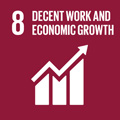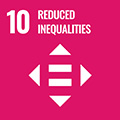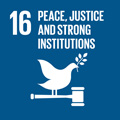- Docente: Roberto Golinelli
- Credits: 6
- SSD: SECS-P/01
- Language: English
- Teaching Mode: Traditional lectures
- Campus: Bologna
- Corso: Second cycle degree programme (LM) in Applied Economics and Markets (cod. 5969)
-
from Nov 12, 2024 to Dec 11, 2024
Learning outcomes
The course aims at helping students navigate the realities of the global economy. The course will emphasize blending theory and data with real-world policies, events, and evidence. The course will discuss patterns of trade, the gains and losses from liberalizing or restricting trade, and the role of increasing returns. At the end of the course the student will be expected to become familiar with policy relevant questions concerning migrations, income distribution, multinational enterprises and ‘North-south’ issues. Protectionism, trade and the environment and the role of international institutions and agreements (the EU, the World Trade Organization (WTO)) will also be discussed.
Course contents
The course presents the main models and the empirical evidence related to
1. Traditional trade theory, technology and comparative advantage (Ricardian Model)
2 Factor abundance and the Heckscher-Ohlin model, the effects of trade liberalisation of factor prices and on the structure of the economy
3. Increasing returns , monopolistic competition and intra-industry trade
4 Heterogeneous firms, trade and productivity and the gravity equation
Readings/Bibliography
obert Feenstra, Advanced International Trade, Princeton University press, 2016
Elhanan Helpman, Understanding Global Trade, Belknap Press, 2010
Pol Antràs, Global Production, Princeton University Press, 2016
Teaching methods
Standard Lecture
Assessment methods
Written exam
Teaching tools
Slides available on virtuale
Office hours
See the website of Roberto Golinelli
SDGs




This teaching activity contributes to the achievement of the Sustainable Development Goals of the UN 2030 Agenda.
